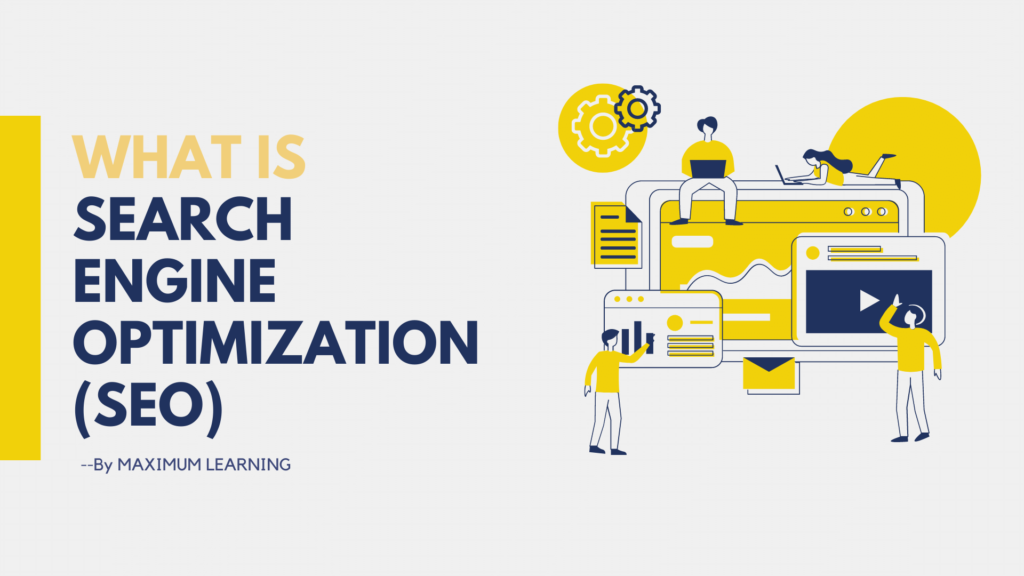In the ever-evolving landscape of digital marketing, two acronyms reign supreme: SEO and SEM. Search Engine Optimization (SEO) and Search Engine Marketing (SEM) are often discussed in tandem, but SEO SEM integration serves distinct purposes in driving traffic to websites and improving online visibility.
SEO focuses on optimizing your website to improve its ranking in organic search results. It involves a multifaceted approach, including keyword research, content creation, on-page optimization, link building, and user experience optimization. The goal of SEO is to increase organic traffic by making your website more search engine-friendly and user-friendly over time.
On the other hand, SEM involves paid advertising to promote your website in search engine results pages (SERPs). The most common form of SEM is Pay-Per-Click (PPC) advertising, where advertisers bid on keywords and pay a fee each time their ad is clicked. SEM offers the advantage of immediate visibility and targeted exposure to potential customers.
While SEO and SEM serve distinct purposes, understanding how they work together can greatly enhance your marketing efforts and amplify your online presence. By integrating both strategies into a cohesive marketing strategy, you can achieve comprehensive coverage in search engine results, capture both organic and paid traffic, and reinforce your brand presence and credibility. Additionally, SEM can provide valuable insights into keyword performance that can inform your SEO keyword targeting efforts, and SEO can continue to work in the background to improve long-term visibility while SEM drives immediate results, particularly for short-term promotions or seasonal campaigns. Overall, a holistic approach that combines the strengths of both SEO and SEM integration can maximize your online visibility, drive traffic, and ultimately, improve your bottom line.
SEO: Building Organic Visibility
SEO focuses on optimizing your website to improve its ranking in organic search results. It involves a multitude of tactics aimed at making your site more search engine-friendly and user-friendly. Some key elements of SEO include:
Keyword Optimization:
Keyword optimization involves thorough research to identify the terms and phrases that users are typing into search engines to find content related to your industry, products, or services. By strategically incorporating these keywords into your website’s content, including titles, headings, meta descriptions, and body copy, you can align your content with user intent and improve its relevance in search results.
Content Creation:
High-quality, relevant content lies at the heart of SEO. Creating valuable and engaging content that addresses the needs, questions, and interests of your target audience not only attracts visitors to your site but also encourages engagement, shares, and return visits. Content formats can vary from blog posts and articles to videos, infographics, and podcasts, catering to diverse preferences and consumption habits.
On-Page Optimization:
On-page optimization involves optimizing various elements within your website to make it more accessible and understandable to search engine crawlers. This includes optimizing meta tags (title tags, meta descriptions), headings (H1, H2, etc.), image alt text, and URL structures. By adhering to best practices and ensuring that each page is properly optimized, you can enhance crawlability, indexing, and ultimately, visibility in search results.
Link Building:
Backlinks, or inbound links from other websites to yours, play a significant role in SEO. Search engines view backlinks as indicators of authority, relevance, and trustworthiness. By earning links from reputable and relevant websites within your industry, you can strengthen your site’s credibility and improve its chances of ranking higher in search results. Link-building strategies may include outreach, content promotion, guest blogging, and participation in industry forums or communities.
User Experience (UX) Optimization:
User experience is a critical factor in SEO, as search engines prioritize websites that provide a positive and seamless experience for visitors. This encompasses factors such as page load times, mobile responsiveness, intuitive navigation, and overall usability. By prioritizing UX optimization, you not only improve your site’s chances of ranking well in search results but also enhance user satisfaction and engagement, leading to higher conversion rates and repeat visits.
SEO is indeed a long-term endeavor that requires consistent effort, monitoring, and adaptation to stay ahead of evolving search algorithms and user behaviors. While the results may not be instantaneous, the organic traffic generated through effective SEO practices tends to be more sustainable, cost-effective, and valuable in the long run, establishing a solid foundation for online success.
SEM: Driving Immediate Results with Paid Advertising
SEM, or Search Engine Marketing, serves as a powerful tool for businesses looking to achieve immediate visibility and drive targeted traffic to their websites through paid advertising. Unlike SEO, which focuses on organic methods to improve a website’s visibility in search results over time, SEM allows advertisers to gain instant exposure by paying for placement at the top of search engine results pages (SERPs). Here’s a closer look at the key components of SEM and how they facilitate driving immediate results:
Keyword Research:
Keyword research lies at the core of SEM campaigns. By identifying high-value keywords with significant search volume and commercial intent, advertisers can target specific queries that are relevant to their products or services. Through thorough keyword research, businesses can optimize their SEM campaigns to reach potential customers who are actively searching for what they offer.
Ad Creation:
Crafting compelling ad copy and visuals is essential for capturing users’ attention and encouraging them to click through to your website. Advertisers must create ads that are not only relevant to the user’s search query but also persuasive and engaging. Effective ad copy should highlight unique selling points, promotions, or offers to entice users to take action and visit your site.
Bid Management:
Bid management plays a crucial role in SEM campaigns, particularly in Pay-Per-Click (PPC) advertising models. Advertisers bid on keywords, competing with other businesses for ad placement in search results. Strategic bid management involves finding the right balance between maximizing ad exposure and staying within budget constraints. By adjusting bids based on factors such as keyword performance, competition, and campaign goals, advertisers can optimize their ad spend and achieve better results.
Ad Extensions:
Ad extensions are additional features that enhance the visibility and functionality of ads in search results. Examples of ad extensions include site links, callouts, location extensions, and structured snippets. These extensions provide users with additional information about your business, such as links to specific pages, promotional offers, business locations, and product attributes. By utilizing ad extensions effectively, advertisers can improve ad relevance, attract more clicks, and enhance user engagement.
Performance Tracking:
Monitoring key performance metrics is essential for evaluating the effectiveness of SEM campaigns and optimizing future efforts. Advertisers should track metrics such as click-through rate (CTR), conversion rate, cost per acquisition (CPA), and return on ad spend (ROAS). By analyzing campaign performance data, businesses can identify areas for improvement, make data-driven decisions, and allocate budgets more effectively to maximize ROI.
SEM offers businesses the opportunity to achieve immediate visibility and drive targeted traffic to their websites through paid advertising. By leveraging strategic keyword targeting, compelling ad creative, effective bid management, ad extensions, and performance tracking, businesses can create successful SEM campaigns that deliver measurable results and contribute to their overall marketing objectives.
How SEO and SEM Work Together
The integration of SEO and SEM into a cohesive digital marketing strategy can yield powerful results, leveraging the strengths of each approach to enhance overall visibility, traffic, and conversions. Here’s how SEO and SEM work together synergistically:
Keyword Insights:
SEM campaigns provide valuable data on keyword performance, including click-through rates, conversion rates, and cost-per-click metrics. This data can offer insights into which keywords are driving the most traffic and conversions, informing your SEO keyword targeting efforts. By identifying high-performing keywords through SEM campaigns, you can prioritize them in your SEO strategy to further optimize organic search performance.
Comprehensive Coverage:
By utilizing both SEO and SEM, you can achieve comprehensive coverage in search engine results pages (SERPs), capturing both organic and paid traffic. While SEO focuses on improving organic visibility over time, SEM ensures immediate visibility through paid advertising. Together, they enable you to maximize your presence in search results and reach a broader audience across different stages of the customer journey.
Synergistic Effects:
A combined SEO and SEM strategy can reinforce your brand presence and credibility in search results. When users see your website appearing multiple times in both organic and paid listings, it reinforces your brand’s authority and relevance in their minds. This increased visibility and brand recognition can lead to higher click-through rates, improved user trust, and ultimately, higher conversion rates.
Seasonal Campaigns:
SEM is particularly effective for short-term promotions or seasonal campaigns where immediate visibility is crucial. By running targeted PPC ads during peak seasons or promotional periods, you can quickly drive traffic and conversions. Meanwhile, SEO continues to work in the background to improve long-term visibility and organic rankings, ensuring sustained results even after the campaign ends. This combination allows you to capitalize on short-term opportunities while laying the groundwork for ongoing success through SEO efforts.
In conclusion, SEO and SEM are complementary strategies that, when used together effectively, can enhance your online visibility, drive targeted traffic to your website, and ultimately boost your bottom line. By understanding the unique strengths of each approach and integrating them into your overall marketing strategy, you can achieve sustainable growth and success in the competitive digital landscape.




